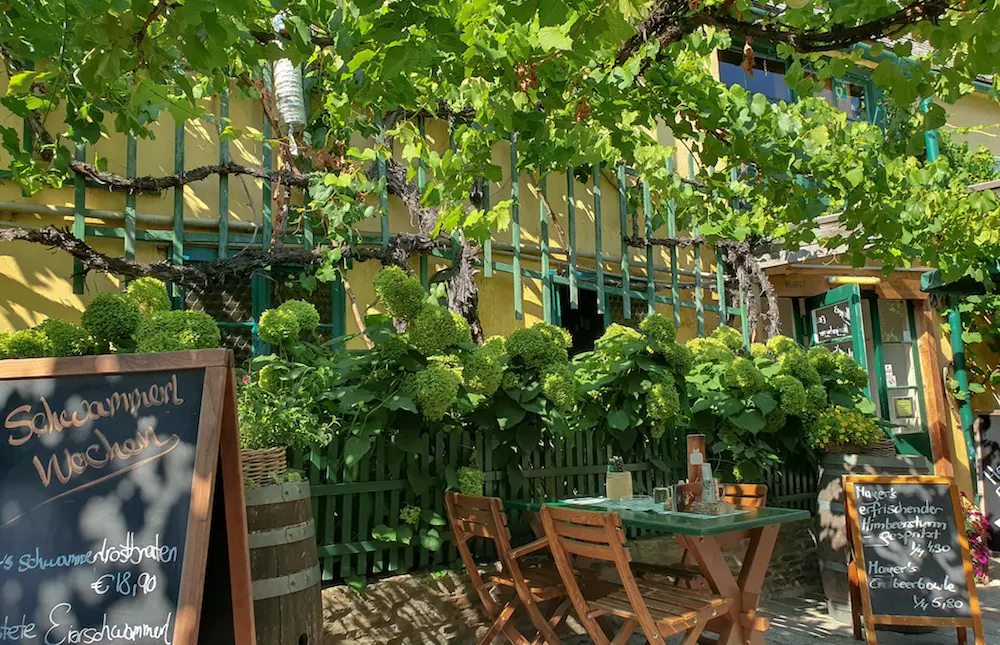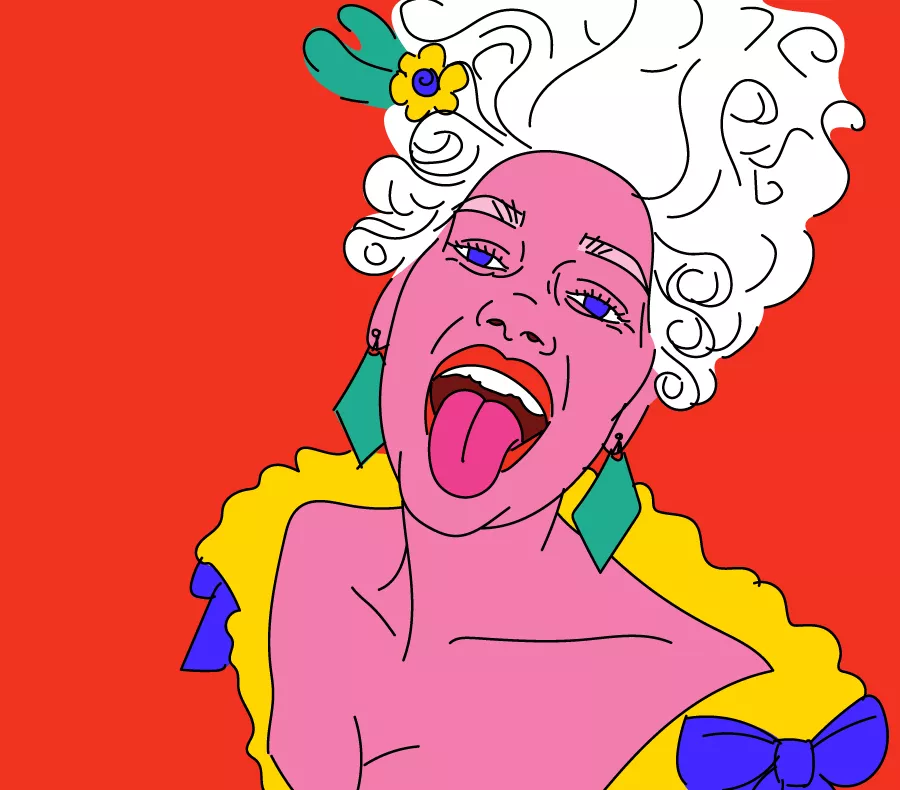So, with all this happening, Vienna’s beloved Heurige (translation wine tavern) become particularly popular places.
We started to do some research about these well loved wine swilling places and the more we learned, the more we realised how fascinating Heurige are.
Here are 15 facts about the history of Heurige and what makes them really unique places:
1.) Anybody can open a place and call it a Heuriger
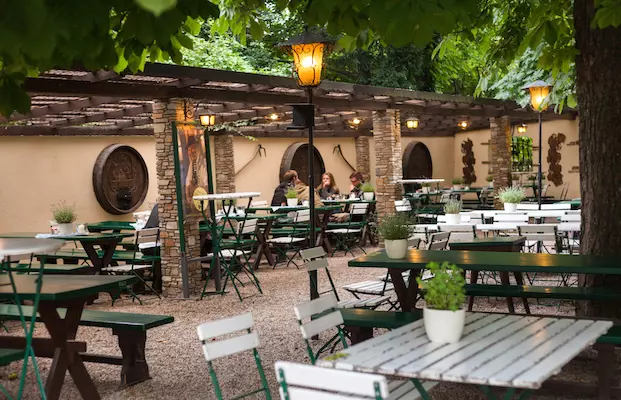
The word ‘Heuriger’ is not patented so basically anybody can open a place and call it one. Why is this interesting? Well, it’s a known fact that a real Heuriger can only sell wine and food that’s produced by the owners, however, if anybody can open a Heuriger, they can just open one up and imitate the atmosphere of a real wine tavern while selling wine and Wurst they bought in Hofer. Yep, so some of those so-called Heurige you’ve been to may just have been fakes!
2.) When talking about ‘the Heurige season,’ you could also be talking about potatoes
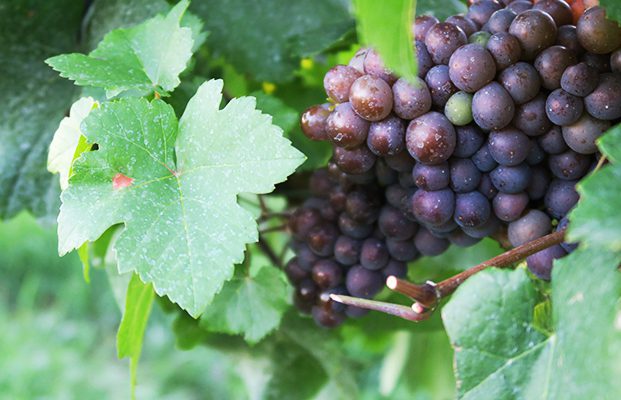
In Austria, the word ‘Heurige’ also refers to the first potatoes of the year, also referred to as, ‘Frühkartoffel’ (early potatoes), which are harvested between June and early August.
3.) Heuriger refers to a young wine that’s younger than a year old
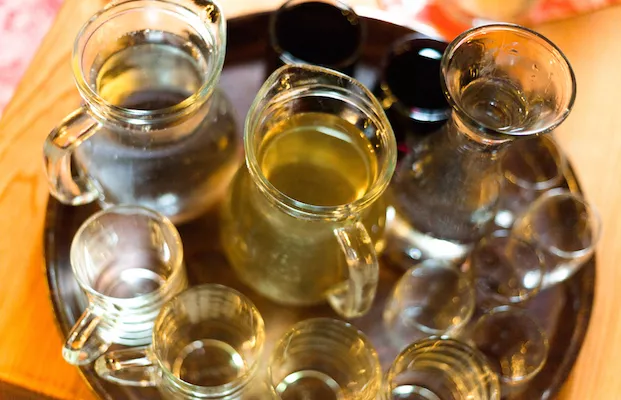
In Viennese German, the word ‘Heuer’ translates to ‘this year.’ So when you’re referring to Heuriger wine, you’re talking about all those wines produced from the last harvest that are less than a year old. And, as you may have already worked out already, that’s where Vienna’s wine taverns get their name from.
4.) In the early days, Heurige weren’t allowed to sell anything but wine, bread and other baked goods
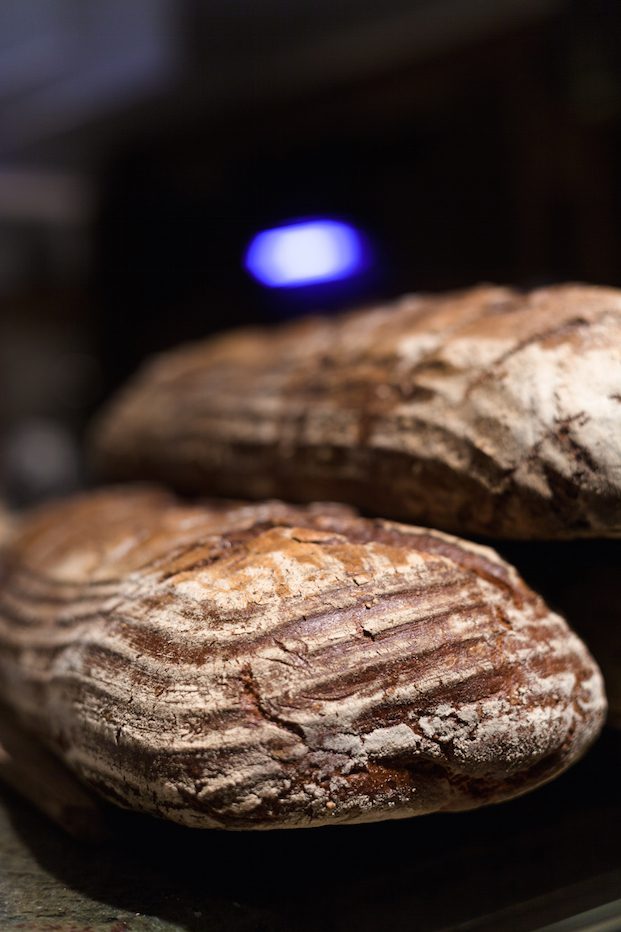
Only after an ordinance was issued by Emperor Joseph II in the 18th century were Heurige owners allowed to sell home-made food and products to accompany their wine.
5.) Have you heard of the Pretzel Boys that toured the Heurige of yesteryear?
Before Heurige were given the green light to sell their own food, there were young boys called, ‘Brezelbuben’ who would walk from one Heuriger to another selling pretzels.
6.) There’s a difference between Bäuerliche Heurige (Farmers’ Heurige) and Buschenschank
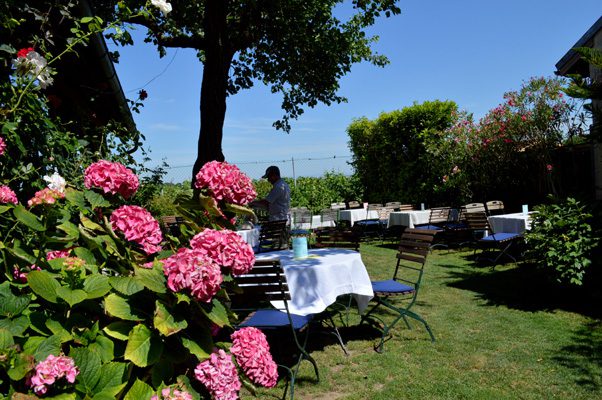
In a genuine farmers’ Heuriger, you’ll only find drinks and cold food being served that has been made by the owners. Whereas, in a Buschenschank, which is also often called a Heuriger, hot meals are also served. And, obviously, in both kinds of wine taverns, you’ll find wine.
7.) A ‘real’ Heuriger can only serve wine produced from their own grapes and by their own in-house vintner
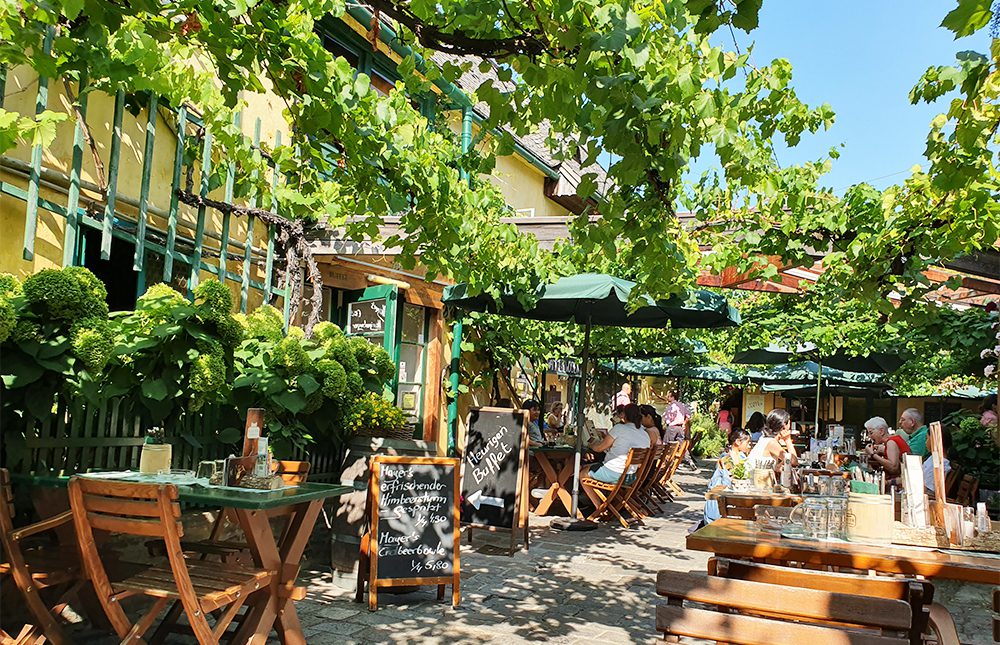
It doesn’t get more local, regional and organic than what you’ll consume in a Viennese Heuriger! You’ll never find the same wine being served at two different Heurige. Every genuine Heuriger have to serve up wine that has been produced by grapes of their own, and by their own winemaker.
8.) The name Buschenschank actually comes from the bundle of pine branches hanging outside wine taverns
Never has a bundle of twigs possessed so much meaning. If you see a bush of pine branches hanging out the front of a Heuriger, or Buschenschank, you can be sure of two things – one: that it’s one of those Heurige only selling their own wines, and two: that the vintner has wine to sell!
This tradition of the hanging bush (sounds like a bad porn, right?) goes way back. Back in the day, if you wanted to serve wine, a vintner would have to contact the city who then sent out a Weinprüfer (wine tester – what an awesome job, right?) to test the quality of your stuff.
Then a ‘Weinrufer‘ (wine announcer) would walk through the town, waving a fir-tree branch in his hand to declare the positive results of the test. Afterwards, they would attach this bush to the house of the Buschenschank. So don’t be alarmed if you see some drunk dude walking up the street waving a branch around. Ok, maybe these days it may be a bit strange.
9. ) Back in the days, Heurige were only allowed to stay open for 3 months in the year.
In most regions of Austria, this rule has changed, however. Nowadays, they’re allowed to stay open for as long as they want in many regions. But, this all depends on the ‘Buschenschankgesetz’ of the region.
10.) The fact that you often drink wine out of a glass mug at a Heuriger has apparently always been a thing…for good reason
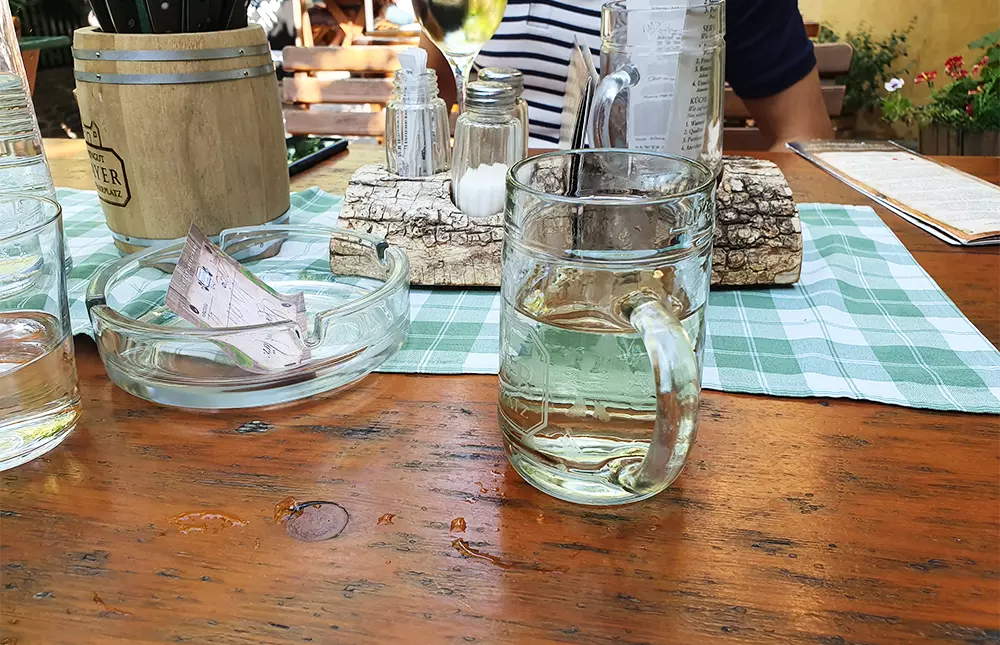
The glass with a handle is an ingenious invention that was realised in the realm of Heurige. You see, a lot of the food in a Heuriger is eaten by hand…which means you often get greasy fingers. The glass mug gives you a better grip on your wine glass. Which you’ll particularly think is genius once you’re onto your 2nd carafe of wine.
11.) Roses are red, violets are blue… but the rose is nonetheless always planted next to the vines (ok, we suck at poetry)
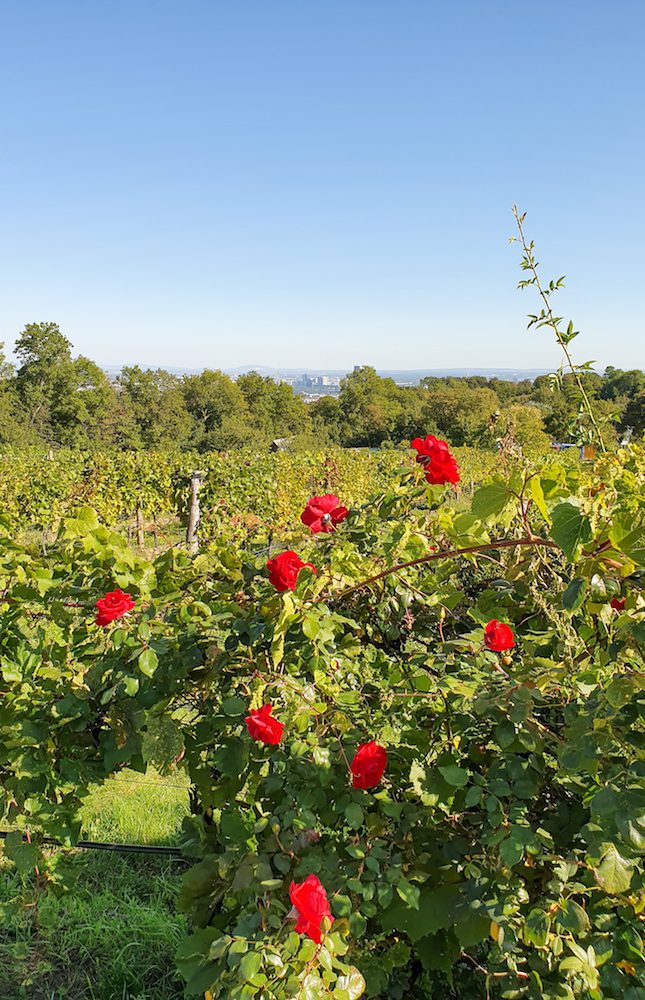
Ok, roses may be a wonderful addition to a bouquet, but they’re also very helpful for winemakers. Vintners often plant roses next to their vineyards as they act as an early warning signal that wine lice are about to attack their grapevines. You see, roses are more prone to being attacked by the lice, than the grapes, so if the roses die, a winemaker knows they’e got to act quick.
13.) Live music at a Heuriger used to be a sign of bad wine
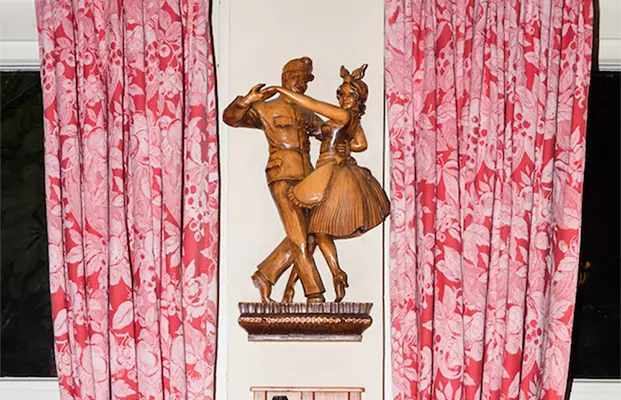
Back in the days, it was said that any Heuriger that hired musicians was trying to distract the guests from the bad quality of their wine. This has, of course, changed and live music at a Heuriger only adds to the experience of enjoying a top wine.
14. Two brothers were behind the music you’ll often hear being played in a Heuriger, Schrammelmusik
So there were a couple of brothers with the last name Schrammel, who formed a band with a guy called Strohmayer. They took their band, which they called the Nussdorfers (yes, named after the suburb of Vienna where they played many of their gigs), around from Heuriger to Heuriger playing folk songs, marches, and dance music.
At some point, a guy called Dänzer joined their outfit and they hit the top of the charts! Well, the olden day version of the charts. As in, they got invited to perform by the Viennese elite in their palaces and mansions. They achieved such fame that this folk music you now hear being played in Heuriger, which is a kind of Wienerlied, was named after them: Schrammelmusik.
15.) Watch out for the ‘Ausg’steckt’ sign hanging outside a Heuriger’s entrance
Don’t get too excited. This ‘Ausg’steckt’ sign just tells you that the Heuriger is open and the wine is a’ flowing.

